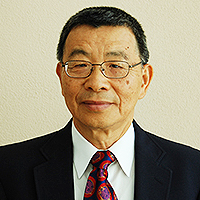The efficacy of complex Decongestive Physiotherapy in patients with Bilateral Primary Lower Extremity Lymphedema and Untreatable multiple health conditions: A Case Report
Published on: 8th September, 2017
OCLC Number/Unique Identifier: 7286355299
Background: Primary lymphedema occurs as a result of genetic abnormalities of the lymph system. Currently, complex decongestive therapy is accepted as the standard treatment of the lymphedema. In this case presentation, we described the management of bilateral primary lower extremity lymphedema and the use of complex decongestive therapy.
Case Report: A 62 years old female patient had stage III primary lymphedema on her left lower extremity and stage II primary lymphedema on her right lower extremity. The patient, who had morbid obesity, also had untreatable sleep apnea, urinary incontinence, umbilical hernia and hypertension controlled by drugs. She had stage 4 gonarthrosis according to Kellgren – Lawrence classification in her both knees. The patient received complex decongestive therapy as an outpatient.
After 27 sessions of complex decongestive therapy, edema reduced in both lower extremities. Before the treatment started, the patient couldn’t go up and down stairs, get out and had difficulty mobility in the home. But after the treatment, the patient could go up and down 16 stairs by holding the railing, get out by two walking sticks and had less difficulty mobility in the home. However, due to gonarthrosis in her knees, her pain did not diminish.
Conclusion: Complex decongestive therapy is effective in the management of bilateral primary lower extremity lymphedema, which progressed with multiple health conditions.
Reduced Pain Scores during Indocyanine Green Lymphography by using a Different Preparation Formula
Published on: 1st April, 2025
Purpose: The purpose of this study was to investigate whether a different indocyanine green lymphography formula can reduce the severe pain encountered during this investigation.Methods: Indocyanine green ICG lymphography frequently induces severe and intolerable pain in patients. It is very important to develop a relatively painless lymphography method. This helps reduce patients’ apprehension during examination. Our center conducted randomized control groups of 60 patients with limb lymphedema. Cases were divided into experimental and control groups. Patients in the experimental group were injected with indocyanine green solution containing 5% glucose, while patients in the control group were injected with indocyanine green solution with sterile water.VAS scores were recorded pre-injection, during, and at 10, 20, and 30 minutes post-injection. We recorded possible side effects, e.g. skin redness, itching, subcutaneous bleeding, bruising, severe allergic reactions, and other complications within 24 and 48 hours after imaging, and analyzed the pain score data. Results: The average pain score of the experimental group was 0-3 points, while the control group was 6-8 points. Disease staging was accurately assessed based on imaging results . No other serious complications occurred.Conclusion: Pain can be significantly reduced by the new modality. This method does not affect lymphography results and imaging quality, and there are no obvious serious complications.




